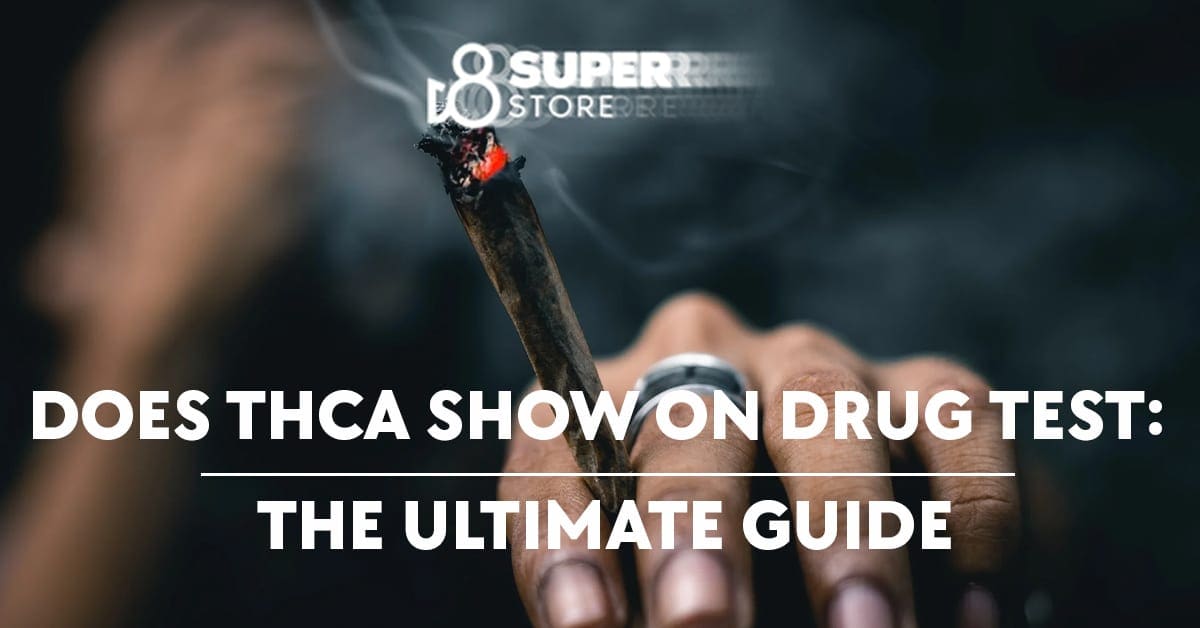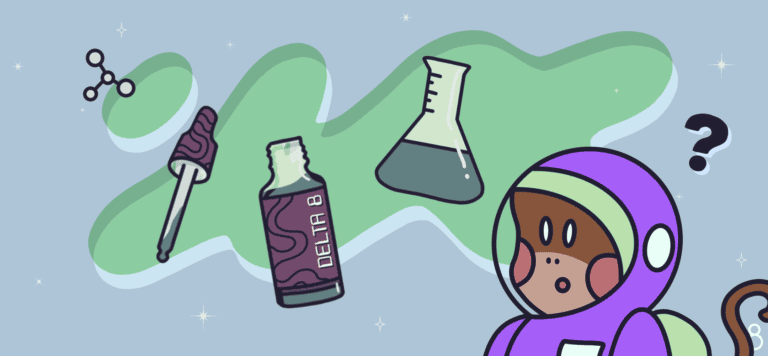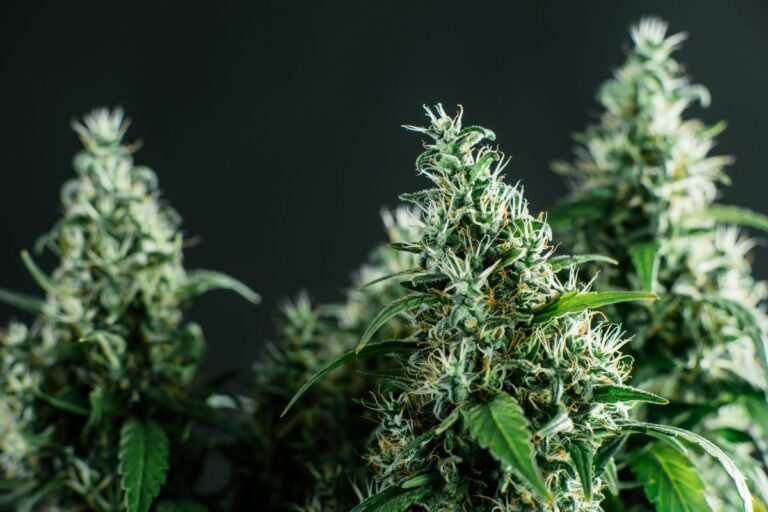Does THCa Show Up on a Drug Test? Understanding Cannabinoid Detection
Got a drug test coming up and worried about marijuana? Here’s a secret: **THCa**, a hidden gem in marijuana, might get you flagged. **THCa** turns into THC – the stuff that gives you a high – when heated. But if you’re thinking THCa won’t matter because it doesn’t get you high, think again. How they test for THCa could really throw you for a loop. We’re going to uncover why THCa is key in understanding drug tests. You’ll leave knowing exactly what testers are looking for and how this could change the game for **your** results. Keep reading to learn the insider tricks for passing your test with flying colors.
- Understanding THCa and Drug Testing
- Detection of Cannabinoids in Drug Tests
- Consumption Methods and Their Impact on Testing
- Interpreting Test Results and Understanding False Positives
- Effects and Benefits of THCa
- Chemical Structure and Potential of Cannabinoids
- Legal Considerations and Industry Standards
- Frequently Asked Questions
- Can consuming THCa result in a failed drug test?
- What is the detection window for THCa in a urine test?
- How is THCa metabolized in the body and does this affect drug testing?
- Are there specific tests for detecting THCa separate from THC?
- How long can THCa be traced in blood and hair drug tests?
- Does THCa have the same legal status as THC in terms of federal law?
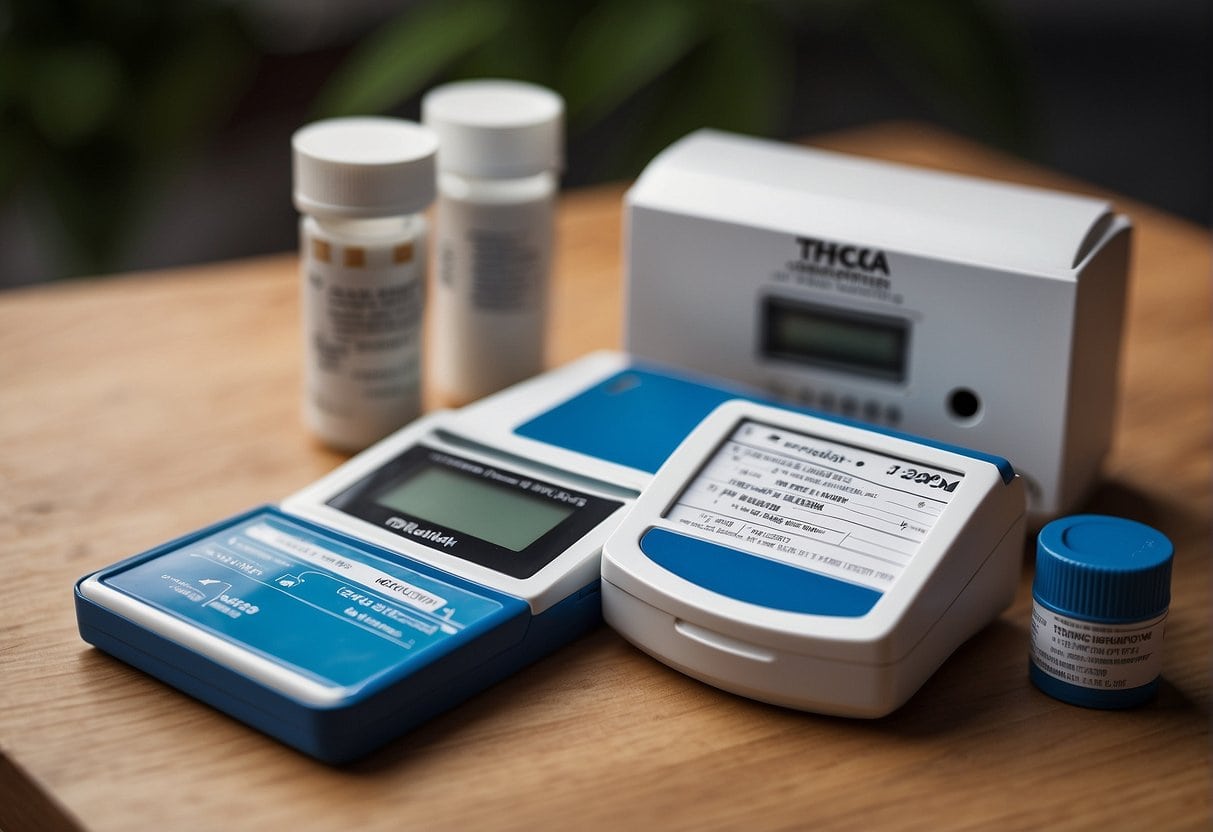
Understanding the distinction between THCa and THC is crucial because most standard drug tests are designed to identify the metabolites of THC, not THCa itself. This means that if you consume non-psychoactive parts of cannabis containing only THCa, it may not trigger a positive test result. However, since THCa can convert into THC through decarboxylation, which occurs when the plant material is heated, it’s possible for a drug test to indicate cannabis use if this conversion has taken place.
The sensitivity of a drug test also depends on the type of sample collected. Urine tests, for instance, are a common method for identifying THC metabolites, which can linger in your system for days or even weeks depending on your level of use. For specific insights on how tetrahydrocannabinolic acid features in urine drug testing, the research highlighted in the study on accurate identification and quantification of 11-nor-Δ9-tetrahydrocannabinol-9-carboxylic acid might offer interesting findings.
Understanding THCa and Drug Testing
This section is dedicated to providing you with detailed knowledge about THCa and its implications for drug tests. You’ll learn about fundamental drug testing processes, what THCa is, how it differs from THC, and the legal nuances concerning its regulation.
The Basics of Drug Testing
Drug tests are designed to detect the presence of substances or their metabolites in your body. Common samples taken for these tests include urine, blood, saliva, and hair. Tests vary in sensitivity and detection windows, but they typically aim to identify use of substance like tetrahydrocannabinol (THC), the primary psychoactive component in cannabis.
What Is THCa?
Tetrahydrocannabinolic acid (THCa) is a non-psychoactive cannabinoid found in raw and live cannabis. Although it’s a precursor to THC, THCa has a different molecular structure and does not cause a high. THCa is present in high concentrations in THCa hemp flower and other unprocessed cannabis flower varieties.
Decarboxylation Process
Decarboxylation is a critical chemical reaction activated by heat. This process converts THCa into psychoactive THC. When cannabis is heated, as in smoking or baking, the decarboxylation occurs, transforming the non-psychoactive THCa into the potent tetrahydrocannabinol associated with cannabis’ effects.
Differences Between THCa and THC
The molecular structure of THCa differs from THC in that it contains a carboxyl group, which is lost upon heating due to the decarboxylation process. This change is significant because THC binds to CB1 receptors in the brain causing psychoactive effects, while THCa does not.
Legal Status and Regulations
The 2018 Farm Bill defined legal hemp as containing less than 0.3% delta-9 THC, affecting the legal status of cannabinoids derived from hemp. THCa, while it is not psychoactive like THC, still falls into a gray area concerning its legality, especially in its potential to convert into THC when heated. This has implications for both the legality of THCa hemp flower and its ability to cause a positive result in a drug test.
Remember that each drug test type and sample might behave differently in detecting THCa or THC. For a deeper dive into the specifics of urine drug testing methods, consider researching evaluation criteria in direct high efficiency liquid chromatography techniques.
Detection of Cannabinoids in Drug Tests
When considering drug testing, understanding the detection of THC and its metabolites across various tests is crucial. Your test results may be influenced by which substances are being screened.
THC Metabolites and Drug Tests
THC-COOH is a primary metabolite of THC, the main psychoactive component in cannabis, and is commonly looked for in urine drug tests. The presence of THC-COOH indicates that your body has processed THC. Urine tests are highly sensitive to THC-COOH, with a standard detection window that can range from a few days to over a month, depending on frequency of use, body mass index, dose, and potency of cannabis consumed.
THCa’s Role in Drug Tests
Tetrahydrocannabinolic acid (THCa) is a non-psychoactive precursor found in raw cannabis. As THCa is converted to THC upon heating, its presence is less relevant in standard drug tests. However, some advanced tests may identify THCa to indicate recent use of cannabis. While less commonly targeted, detection of THCa could occur in hair or blood tests, reflecting a shorter detection span post-consumption compared to metabolites found in urine.
Factors Affecting Detection
The sensitivity of a drug test varies by type. Blood tests and saliva tests have a shorter detection window for THC and its metabolites, usually up to a few hours or days. In contrast, hair tests can reveal cannabis use over a longer period, up to several months, due to slow incorporation of metabolites into hair strands. Cannabinoid detection is also influenced by strength of the product used and frequency of use, with higher potency and greater frequency increasing the likelihood of a positive result. Your metabolism, frequency, and recency of use are key factors that can affect the detectability of cannabinoids like THCa and THC-COOH in drug screenings.
Consumption Methods and Their Impact on Testing
Understanding how different consumption methods affect drug testing is crucial for interpreting results accurately, particularly when it comes to THC and its non-psychoactive precursor, THCa.
Inhalation: Smoking and Vaping
When you smoke or vape cannabis, you rapidly absorb cannabinoids like THC into your bloodstream. Testing methods, particularly those designed to identify recent use, often look for THC rather than THCa, but some sensitive tests may detect THCa as well. While smoking cannabis can convert most THCa into THC, vaping, especially at lower temperatures, may leave more THCa unconverted, which could influence test results.
Ingestion: Edibles and Tinctures
Consuming cannabis through edibles or tinctures introduces cannabinoids differently than inhalation. With edibles, THC is metabolized in the liver before entering the bloodstream, which can result in the presence of 11-hydroxy-THC, a metabolite indicative of ingestion rather than inhalation. However, since THCa is less psychoactive, it’s often not the focus in these products, but sensitive tests might still detect THCa levels.
Other Methods and Products
Alternative consumption methods, such as dabs, skin creams, or hemp-based products, can vary greatly in their THC and THCa content. Although hemp plants typically have lower THC concentrations, they can still contain detectable levels of THCa. Most standard drug tests are not refined enough to distinguish between cannabinoids sourced from psychoactive cannabis versus legal hemp products.
Interpreting Test Results and Understanding False Positives
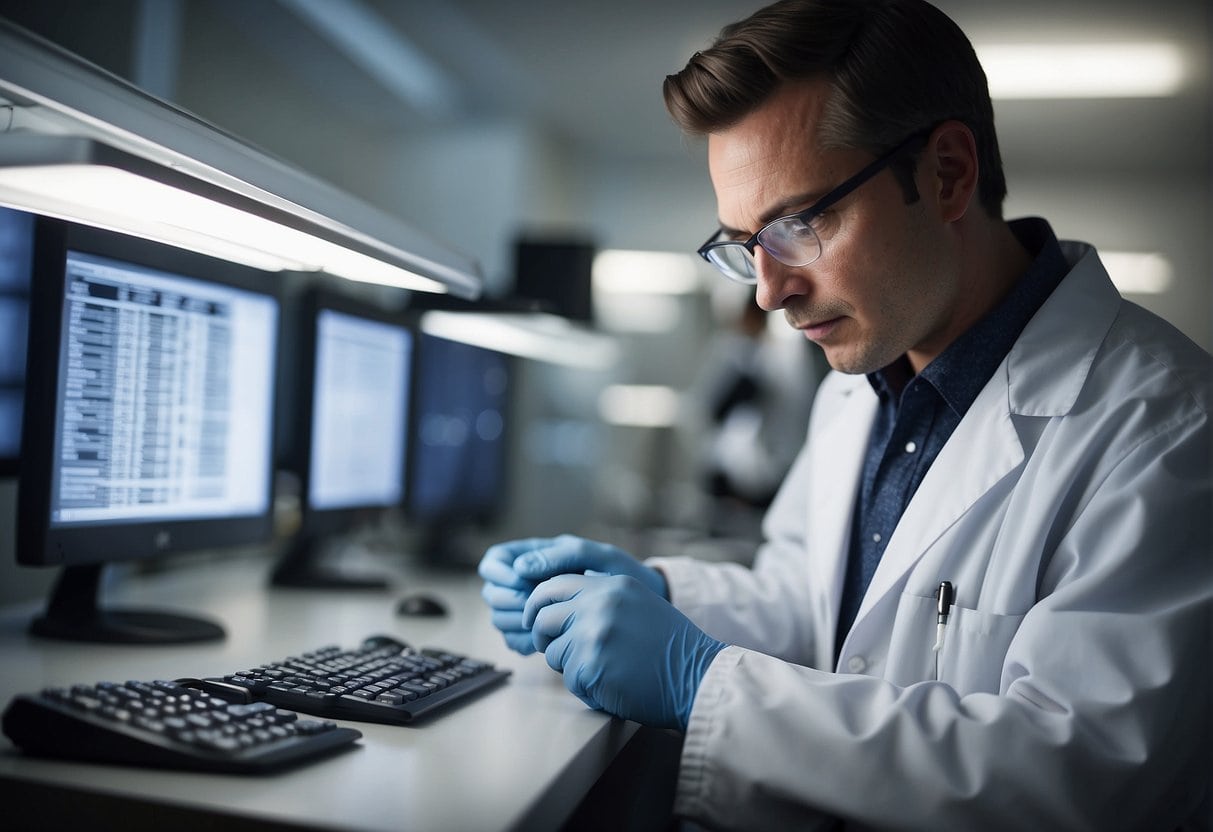
When you take a drug test, particularly one looking for THC, the active component in cannabis, it’s crucial to interpret results accurately and be aware of factors that could lead to false positives.
Understanding a Positive Result
A positive result in a drug test indicates the detection of THC or its metabolites in your system. This might show up in both urine tests and blood tests. The analytes these tests typically look for may include the non-psychoactive THCa, which is a precursor to the active form of THC, or tetrahydrocannabinol itself.
- Urine Test: Detects THC metabolites which linger longer in the body than active THC.
- Blood Test: Measures the level of active THC which suggests more recent use.
Common Causes of False Positives
False positives can occur for a number of reasons in a routine drug screen, including:
- Cross-reactivity: Other substances or medications you’ve taken might cross-react with the test’s antibodies, giving a false indication of THC presence.
- THC Metabolites: Consuming products containing non-psychoactive cannabinoids can sometimes result in metabolites that a test may misinterpret as those of psychoactive THC.
Examples of substances that may cause a false positive:
- Certain prescription medications
- Hemp containing products
- Second-hand marijuana smoke exposure
Avoiding Misinterpretation
To avoid a false positive result, it’s essential to:
- Notify the testing administrator of all legal substances you’ve taken that may affect the test.
- Request a confirmation test, such as GC-MS (Gas Chromatography-Mass Spectrometry), which is more specific and less likely to yield false positives.
By being informed and proactive about the substances you ingest and their potential impact on drug tests, you can better navigate and understand your test results.
Effects and Benefits of THCa
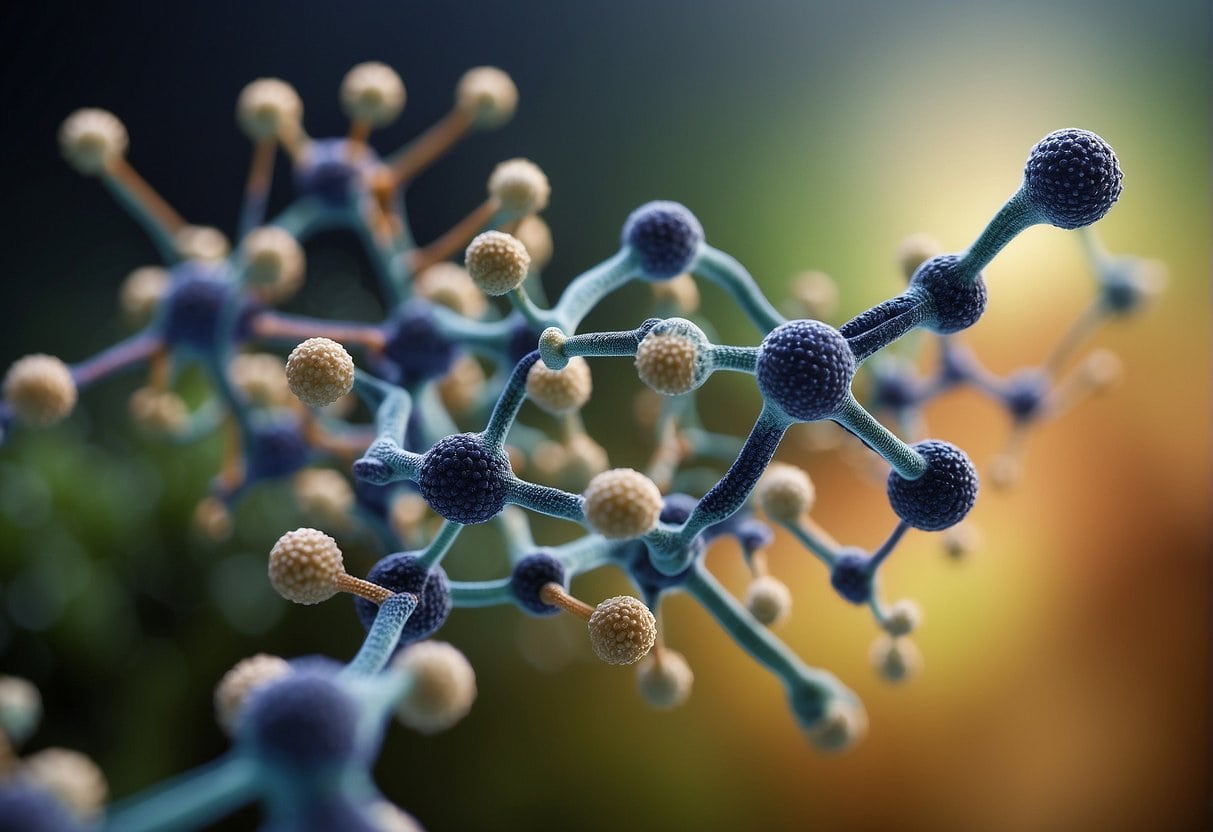
Exploring THCa’s properties, you will find that it’s a compound in cannabis with significant medicinal potential. While not intoxicating itself, it is the precursor to THC, the main psychoactive component of cannabis.
Psychoactive Versus Non-psychoactive Effects
THCa is non-psychoactive, meaning it doesn’t produce the “high” associated with THC. In its raw form, THCa does not affect your mind or behavior. However, when exposed to heat, THCa converts into THC, which is psychoactive. This process, known as decarboxylation, is what activates the intoxicating effects traditionally linked to cannabis consumption.
Potential Health Benefits of THCa
Health Benefits of THCa:
- Anti-inflammatory: Helps in reducing inflammation, potentially aiding in conditions like arthritis.
- Neuroprotective: Offers protection for neural structures, possibly assisting in diseases such as Parkinson’s.
- Nausea: May alleviate symptoms of nausea, showing promise for use in antiemetic therapies.
These properties suggest that THCa has therapeutic benefits that can be harnessed without inducing the psychoactive effects that THC is known for.
THCa in Medical Research
Research on THCa is in early stages, but studies indicate its promise for therapeutic use. Scientists are examining the effects of THCa on sleep, neurodegenerative diseases, and its potential as a neuroprotective agent.
- Sleep: Investigation into THCa’s influence on sleep patterns and quality to understand therapeutic potential.
- Neurodegenerative Diseases: Exploratory studies on its neuroprotective effects against diseases like Alzheimer’s.
- Therapeutic Potential: Research is ongoing to ascertain the full scope of THCa’s health benefits.
The exploration into THCa’s contributions to health is a developing field, signifying a burgeoning interest in its non-intoxicating, therapeutic properties.
Chemical Structure and Potential of Cannabinoids
In exploring if THCa shows up on a drug test, you must understand the intricate landscape of cannabinoids, which includes their molecular structure and how they interact with your body’s receptors, especially the CB1 receptors.
Comparing Cannabinoids
Cannabinoids such as tetrahydrocannabinolic acid (THCa) and tetrahydrocannabinol (THC) share a closely related molecular structure, yet their effects on the CB1 receptors are vastly different. THCa, for instance, is non-psychoactive unlike THC. The process of decarboxylation transforms THCa into THC, resulting in the psychoactive effects associated with cannabis. Cannabigerolic acid (CBGA) is another cornerstone cannabinoid, serving as a precursor to THCa, CBDA, and CBCA through enzymatic reactions.
THCa as the Mother of All Cannabinoids
THCa is often referred to as the “mother of all cannabinoids,” for its role as a precursor in the synthesis of other cannabinoids such as THC, CBG, and CBC. Its molecular structure contains a carboxyl group which, when removed through decarboxylation, converts THCa into the psychoactive compound THC. This transformation is significant as “total THC” calculations consider the potential THC formed from THCa when assessing cannabinoid content.
Terpenes and Synergistic Effects
Apart from cannabinoids, terpenes are aromatic compounds found in cannabis that contribute to its scent profile and may enhance the effects of cannabinoids through a phenomenon known as the “entourage effect.” This synergetic interaction suggests that the therapeutic potency of cannabis is not just due to individual cannabinoids like THCa or THC, but also due to their relationship with terpenes and other compounds, enhancing the overall effect on your body’s receptors.
Legal Considerations and Industry Standards
When considering whether THCa shows up on a drug test, you must understand the complex interplay between federal and state regulations, testing standards and protocols, and the impact of cannabis’s legal status on consumption and testing policies. Different tests react to and detect cannabis compounds uniquely, and legality plays a crucial role in governing these practices.
Federal and State Regulations
Under federal law, THC remains a Schedule I controlled substance. The 2018 Farm Bill distinguished between marijuana and industrial hemp by setting the legal THC threshold at 0.3% on a dry weight basis for the latter. This distinction is critical as THCa, a non-psychoactive precursor to THC, is found in both plants. While federal regulations seek uniformity, state laws vary significantly. In some states, the presence of THCa could potentially contribute to a positive result in a drug test due to its potential conversion to THC.
Testing Standards and Protocols
The cannabis industry incorporates strict testing standards to ensure legal compliance and consumer safety. Routine drug screens, including urine tests, blood tests, saliva tests, and hair tests, could detect THC. However, common testing protocols often target the active compound THC, not THCa directly. Given that THCa can convert to THC, especially when exposed to heat or light, laboratory standards require precise handling to avoid false positives.
Impact of Legal Status on Consumption and Testing
Your legal status as a consumer can be at risk if you live in a state with stringent cannabis laws. The legal landscape impacts consumption habits as users must navigate the fine line between legal use and the risk of failing a drug test. Even in states where cannabis is legal, employers may enforce a drug-free workplace, leading to complications if you consume products containing THCa. Understanding your state’s stance on cannabis and its testing protocols is crucial for informed consumption decisions and anticipating drug test outcomes.
Frequently Asked Questions
When it comes to drug tests, understanding the nuances of how different cannabinoids are detected is crucial for your peace of mind. This section addresses common queries about THCa, a non-psychoactive precursor to THC, and its implications on drug testing.
Can consuming THCa result in a failed drug test?
While THCa itself is not the psychoactive component that drug tests typically screen for, the process of decarboxylation, which can occur before ingestion or during metabolism, may convert THCa into THC, which is detectable on a drug test.
What is the detection window for THCa in a urine test?
Urine tests usually target THC metabolites rather than THCa, and the detection window can vary based on usage patterns and individual metabolism. In most cases, THCa is not the focus of urine tests, but converted THC can be detected for days to weeks after use.
How is THCa metabolized in the body and does this affect drug testing?
THCa is metabolized in the body through decarboxylation, which, especially when heated, converts it into psychoactive THC. Drug tests identify THC or its metabolites, not THCa directly, hence the presence of THC in your system post-conversion can influence drug test results.
Are there specific tests for detecting THCa separate from THC?
Although less common, there are specific methods such as GC-MS that can differentiate between THCa and THC during testing. However, standard drug tests typically screen for THC rather than THCa.
How long can THCa be traced in blood and hair drug tests?
Blood tests generally have a shorter detection window for cannabinoids, while hair drug tests could potentially reveal cannabis exposure for a more extended period of up to several months. However, these tests are more likely to trace THC uptake than THCa.
Does THCa have the same legal status as THC in terms of federal law?
In terms of federal law, THC is listed as a Schedule I controlled substance. THCa’s legal status can be somewhat complex as it is not explicitly mentioned; however, because it can convert to THC, it is often treated with the same caution in legal contexts.

